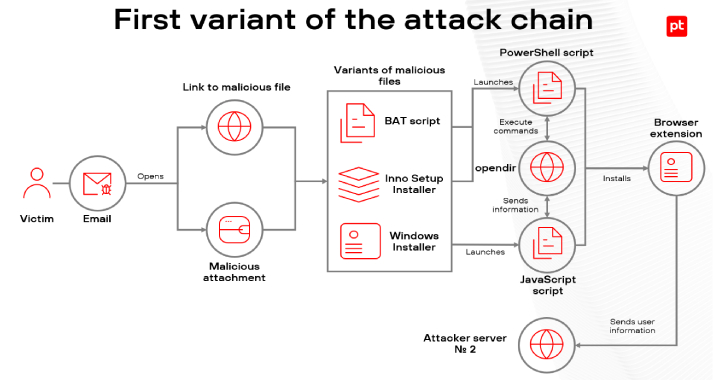
Advanced ITIL Compliance: Automating Service Management Workflows
In today’s fast-paced business landscape, the effective management of IT services is crucial to ensure seamless operations and meet customer expectations. ITIL (Information Technology Infrastructure Library) has long been a recognized framework for achieving this goal, providing a structured approach to IT service management (ITSM). However, as technology evolves, so must our methods of ITIL compliance. Enter automation—the game-changer that can take ITIL to the next level.
The Evolution of ITIL
ITIL has been a guiding light for IT professionals for decades. Its best practices, categorized into a set of processes and functions, have helped organizations manage their IT services effectively. The framework has undergone several iterations, with ITIL 4 being the latest version as of my last knowledge update in September 2021.
ITIL 4, introduced in 2019, reflects the current state of IT service management and aligns with modern practices like DevOps, Agile, and digital transformation. It emphasizes the importance of customer experience and the need for flexibility in service delivery.
The Challenge of ITIL Compliance
While ITIL 4 brought a fresh perspective to IT service management, it also posed some challenges. One significant challenge was ensuring ITIL compliance in an increasingly complex IT environment. Organizations were grappling with the sheer volume of data, the need for real-time insights, and the pressure to deliver services faster than ever before.
Traditional methods of ITIL compliance, which relied heavily on manual processes and documentation, were falling short. IT teams were drowning in paperwork, struggling to keep up with service requests, and finding it hard to meet the demands of digital transformation.
The Role of Automation
This is where automation steps in as a savior. Automation, in the context of ITIL compliance, refers to the use of technology to perform repetitive tasks and processes without human intervention. It brings efficiency, accuracy, and agility to IT service management.
Automating Service Management Workflows
Automation can be applied across various aspects of ITIL compliance. Let’s explore how it can revolutionize service management workflows:
- Incident Management: In the event of an IT issue, automation can quickly identify, categorize, and prioritize incidents. It can also trigger predefined responses or escalate issues to the appropriate teams, reducing resolution times and minimizing service disruptions.
- Change Management: Automating change requests and approvals can streamline the process while ensuring compliance with ITIL guidelines. Automated testing and deployment can also help prevent errors and reduce downtime.
- Problem Management: Machine learning algorithms can analyze historical data to identify recurring issues and root causes. This proactive approach allows IT teams to address underlying problems before they impact services.
- Service Request Fulfillment: Self-service portals powered by automation enable users to request and receive services without human intervention. This not only improves user satisfaction but also frees up IT staff for more strategic tasks.
- Asset Management: Automated asset discovery and tracking ensure that all hardware and software components are accounted for and compliant with licensing agreements. This reduces the risk of non-compliance and associated penalties.
- Configuration Management: Automation can maintain and update configuration items (CIs) in real time, providing accurate and up-to-date information for decision-making and change management.
- Performance Monitoring: Automated monitoring tools can continuously track the performance of IT services and infrastructure, alerting IT teams to issues before they impact users.
- Reporting and Analytics: Automation can generate comprehensive reports and dashboards, offering insights into service performance, compliance levels, and areas for improvement. This data-driven approach is essential for informed decision-making.
Benefits of Automating ITIL Compliance
The benefits of automating ITIL compliance are far-reaching:
- Efficiency: Automation reduces manual effort, allowing IT teams to focus on strategic tasks rather than routine operations. This translates to faster service delivery and improved productivity.
- Accuracy: Automated processes are less prone to errors, ensuring that ITIL compliance is consistently maintained.
- Consistency: Automation enforces standardized procedures, reducing variations in service management practices.
- Cost Savings: By optimizing resource allocation and reducing downtime, automation can lead to significant cost savings.
- Agility: Automated workflows can be easily adapted to changing business needs, making it easier to respond to evolving customer demands.
- Improved Customer Satisfaction: Faster response times, self-service options, and proactive problem resolution enhance the customer experience.
- Risk Reduction: Automation helps identify and address compliance gaps, reducing the risk of security breaches and non-compliance penalties.
Implementing Automation in ITIL Compliance
To harness the power of automation for ITIL compliance, organizations should consider the following steps:
- Assessment: Conduct a thorough assessment of existing ITIL processes to identify areas that can benefit from automation.
- Select the Right Tools: Choose automation tools that align with your organization’s ITIL framework and ITSM goals. Consider factors such as scalability, integration capabilities, and ease of use.
- Define Workflows: Clearly define the workflows you want to automate, including triggers, actions, and approvals.
- Training: Provide training to IT staff to ensure they are proficient in using automation tools.
- Testing: Rigorously test automated workflows to identify and address any issues or bottlenecks.
- Continuous Improvement: Regularly review and refine automated processes to adapt to changing business needs and ITIL updates.
- Security: Implement security measures to protect automated processes from potential threats and breaches.
Real-World Examples
Several organizations have already embraced automation to enhance ITIL compliance. Here are a few real-world examples:
- Netflix: The streaming giant employs automation to monitor the performance of its IT services. It uses machine learning algorithms to predict and mitigate potential issues before they affect the user experience.
- Salesforce: Salesforce has automated its change management processes, allowing for faster and more reliable software updates. Automation ensures that changes are tested and deployed seamlessly.
- CERN: The European Organization for Nuclear Research uses automation to manage its vast IT infrastructure. Automated workflows help CERN maintain ITIL compliance while dealing with the complexities of particle physics research.
Challenges and Considerations
While automation offers numerous benefits, it also comes with challenges and considerations:
- Initial Investment: Implementing automation tools and processes may require a significant upfront investment.
- Change Management: Employees may resist the shift to automation. Effective change management and communication are crucial to address this challenge.
- Integration: Ensuring that automation tools integrate seamlessly with existing IT systems and applications can be complex.
- Security: Automation can introduce new security risks if not properly configured and monitored.
- Compliance: Organizations must ensure that automated processes comply with industry regulations and standards.
Conclusion
Advanced ITIL compliance is essential for organizations striving to deliver high-quality IT services in today’s digital age. Automation has emerged as a powerful ally in this endeavor, offering efficiency, accuracy, and agility.
By automating service management workflows, organizations can streamline incident management, change management, problem resolution, and more. The benefits are clear: improved efficiency, cost savings, enhanced customer satisfaction, and reduced risks.
While there are challenges to overcome, the advantages of automation in ITIL compliance make it a worthwhile investment. As technology continues to evolve, embracing automation is not just an option but a necessity to stay competitive and meet the ever-increasing demands of the digital world.
Contact Cyber Defense Advisors to see how we can tailor our ITIL compliance services to your needs.




